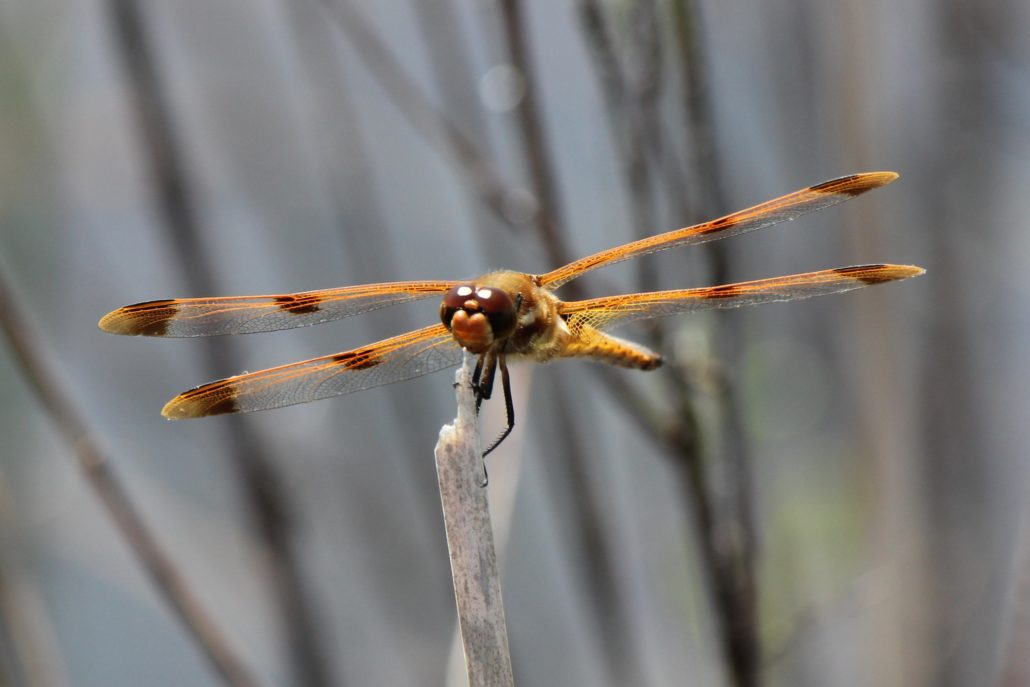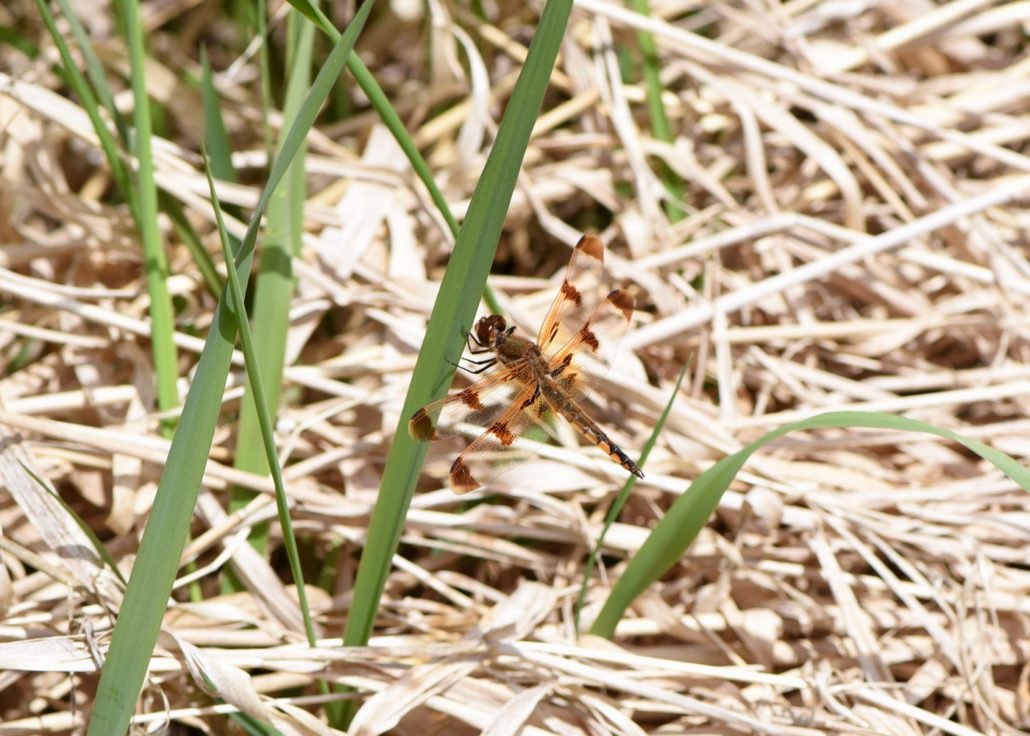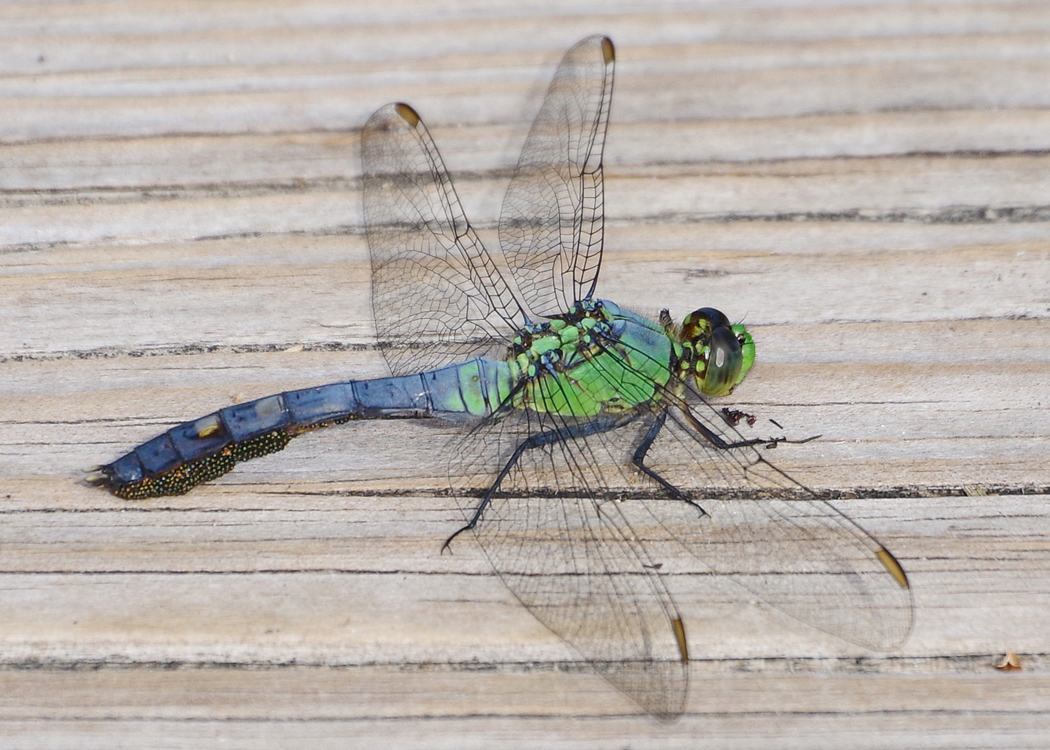
Early Summer Scenes the Dragonflies
Greetings, BugFans,
Spring was long and cool, an arrangement that the BugLady usually applauds (she savors every little step into spring, and she doesn’t like it when the phenology of six weeks is squished into one or two). But this year bordered on the ridiculous. Water warms slowly and steadily (those of us that live in the air often experience dramatic daily fluctuations), so a cold spring means that dragonfly and damselfly naiads, which grow up underwater, are slow to wake up and consume those final calories before emerging as adults. All of which is a roundabout way of saying that dragonflies and damselflies have been a little late this year, but with some dedicated stalking, the BugLady found some cool things as summer neared, including many tender, young, recently-emerged odonates.
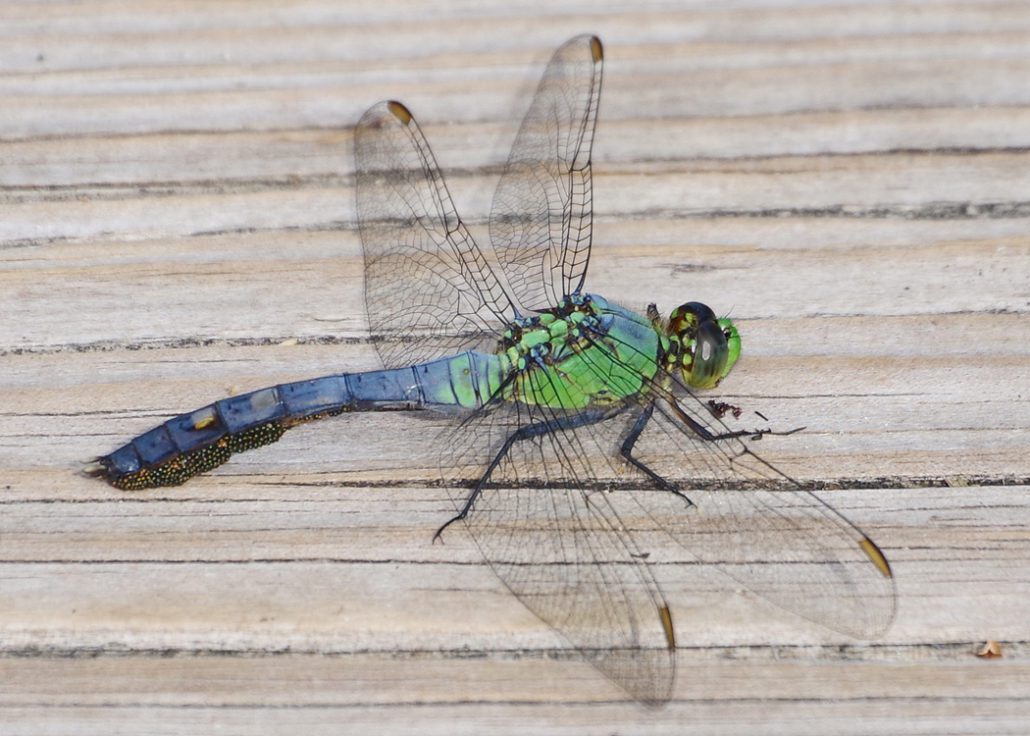
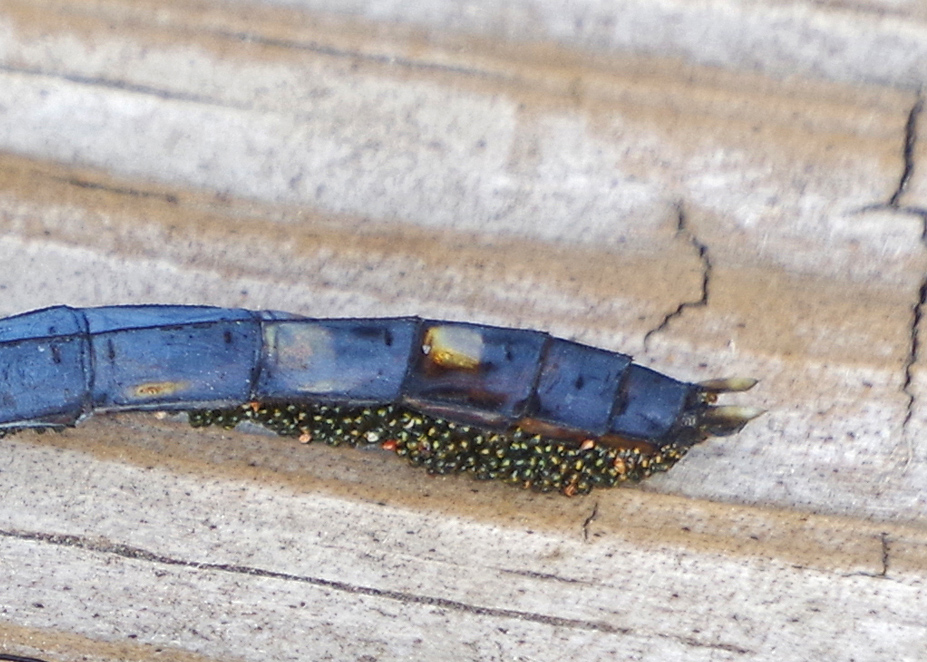
EASTERN PONDHAWK WITH MITES: When the BugLady first saw this dragonfly, she thought that for some reason his abdomen had gotten muddy, but a peek through the camera lens revealed that he was carrying a huge load of water mites. Adult water mites are (mostly) free swimming carnivores, but they go through a tick-like nymphal stage in which they attach to and feed on other aquatic invertebrates (see their story at https://uwm.edu/field-station/water-mite-redux/).
EXUVIA ON POTAMOGETON: The leaves and flower stalks of aquatic plants in the genus Potamogeton are dragon and damselfly magnets. Here, a female Violet/Variable Dancer damselfly stands on a leaf as she oviposits in an underwater stem. The empty damselfly skins (exuvia) that decorate the flower stalk show that it has been a busy place.
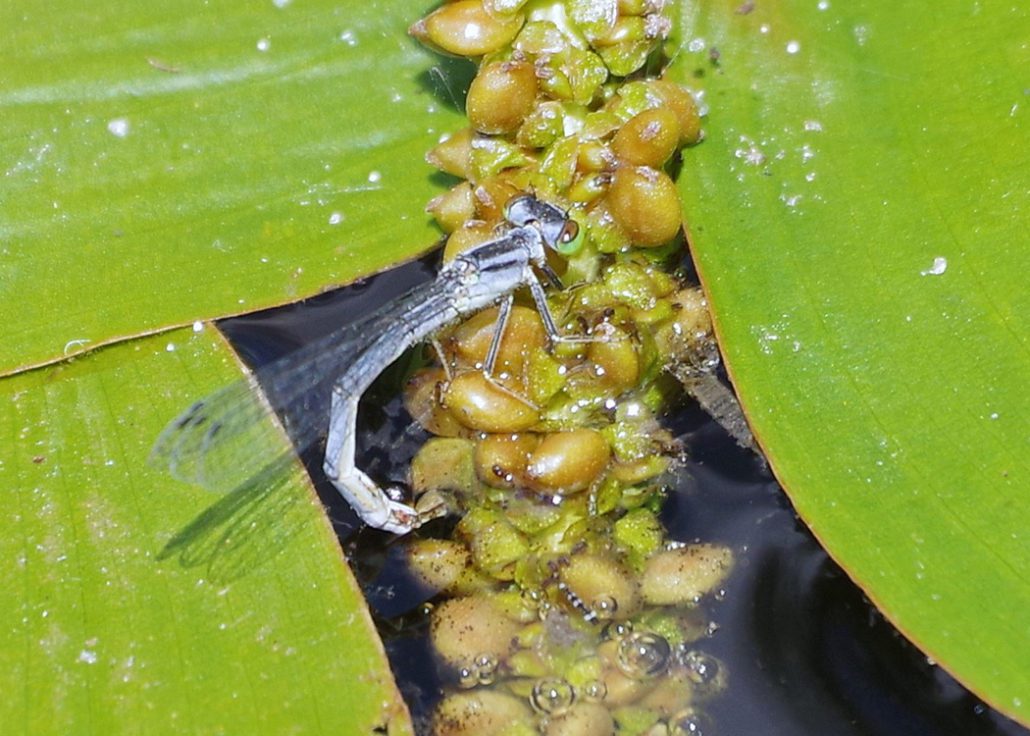
EASTERN FORKTAIL: A female Eastern Forktail damselfly oviposits directly into the flower stalk. The stalk will sink, and when her eggs hatch, her young will swim out into the water.
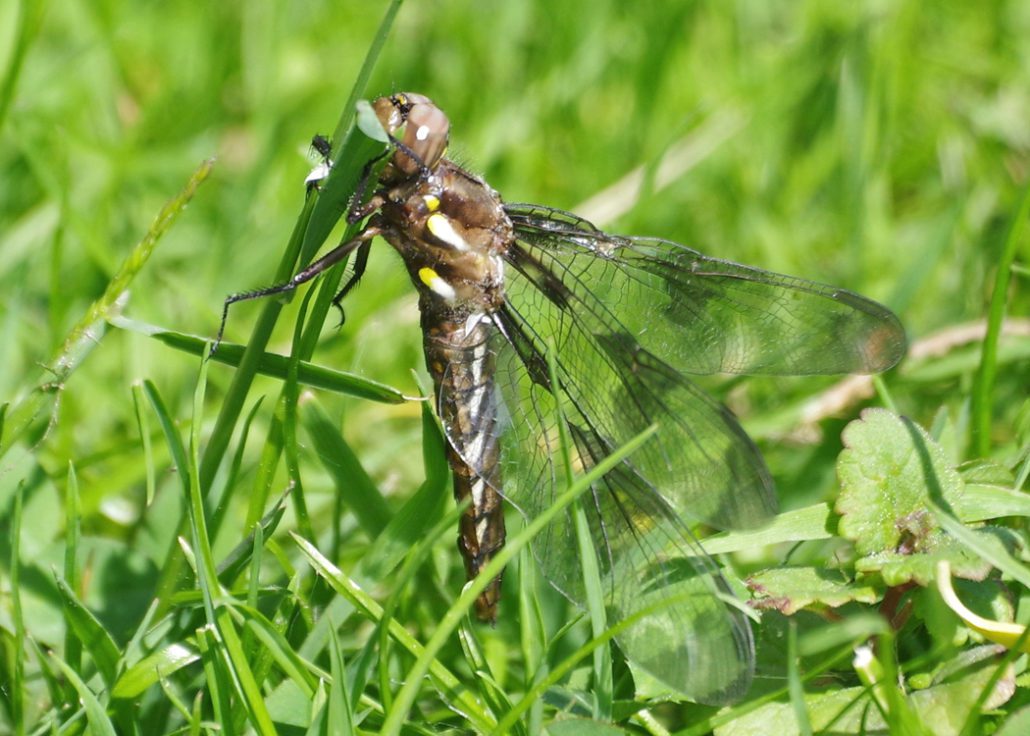
COMMON WHITETAIL: A recently-emerged female Common Whitetail dragonfly crawled out of the water, climbed 15” up the river bank, and then trekked another two feet across mown grass to find the perfect spot to stop and gather strength for her life in the air. Dragonflies may take a few days to achieve their mature coloration – here’s what she’ll look like when the spots on her wings intensify https://bugguide.net/node/view/7160, and here’s the male https://bugguide.net/node/view/27710.
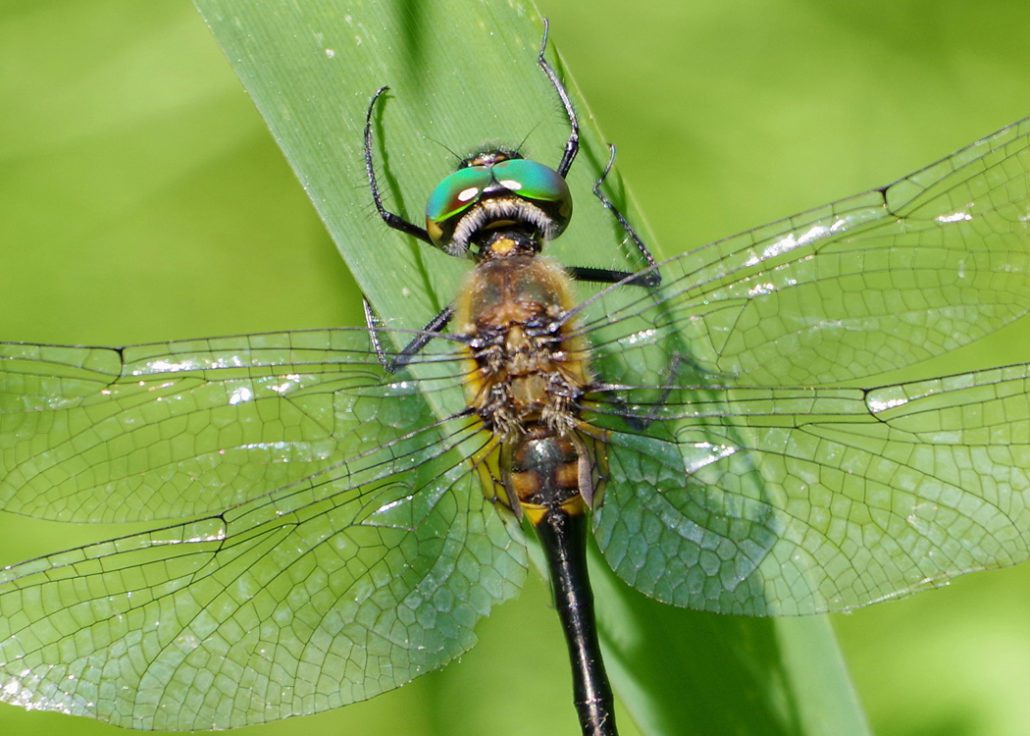
RACKET-TAILED EMERALD: These very inquisitive dragonflies fly back and forth above the trail as you walk along. When the sun is at your back, the glowing eyes of an approaching emerald are a religious experience!
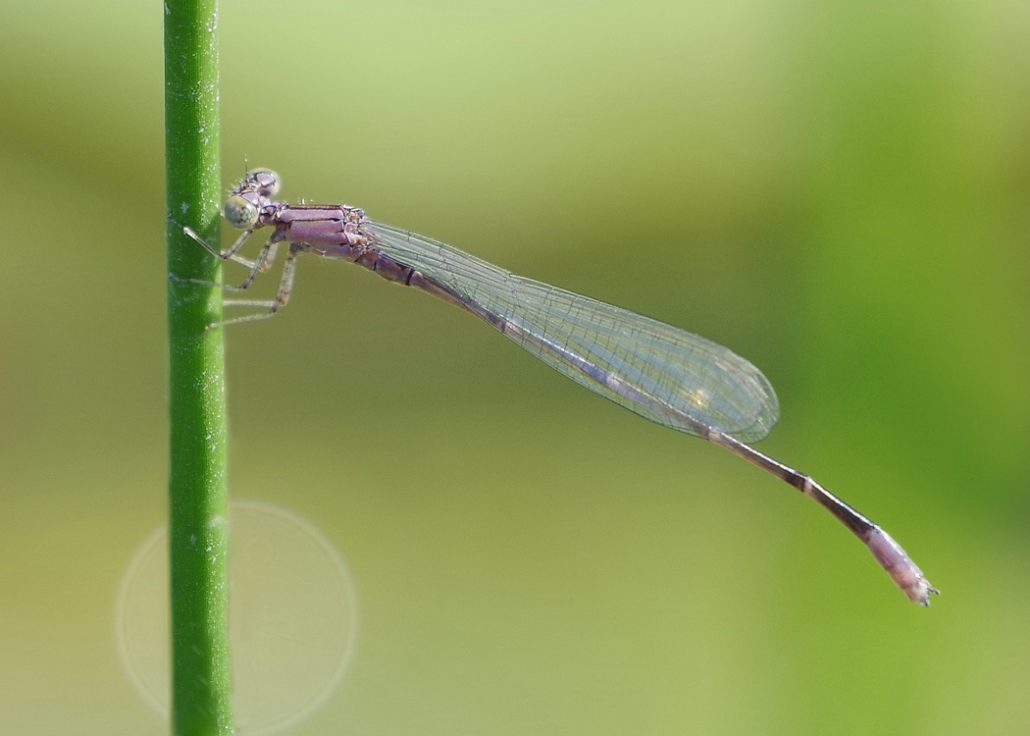
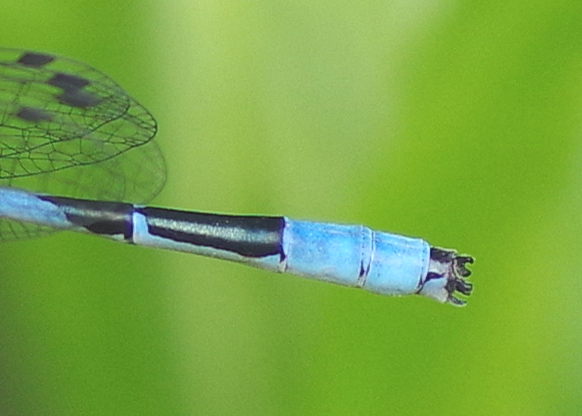
SLENDER BLUET DAMSELFLY: Bluets can be a confusing bunch of damselflies. Some species are very distinct – one is neon blue at one end and yellow at the other, one is rainbow-colored, one is orange, and a few Eastern species are red. But for many of the blue and black species, scrutinizing the male’s rear appendages is the best way to identify them (the Marsh Bluet terminates in a tiny pipe wrench). You can narrow the field by eyeballing the comparative amounts of blue and black on the abdomen and putting them into the “blue-type,” “black-type,” or “intermediate-type” category. This young male, who is in what BugFan Bob calls “that embarrassing purple stage,” will be a spectacular black-type bluet when he matures https://bugguide.net/node/view/1613844/bgimage. And one of these days, the Slender Bluet will get a BOTW of its own.
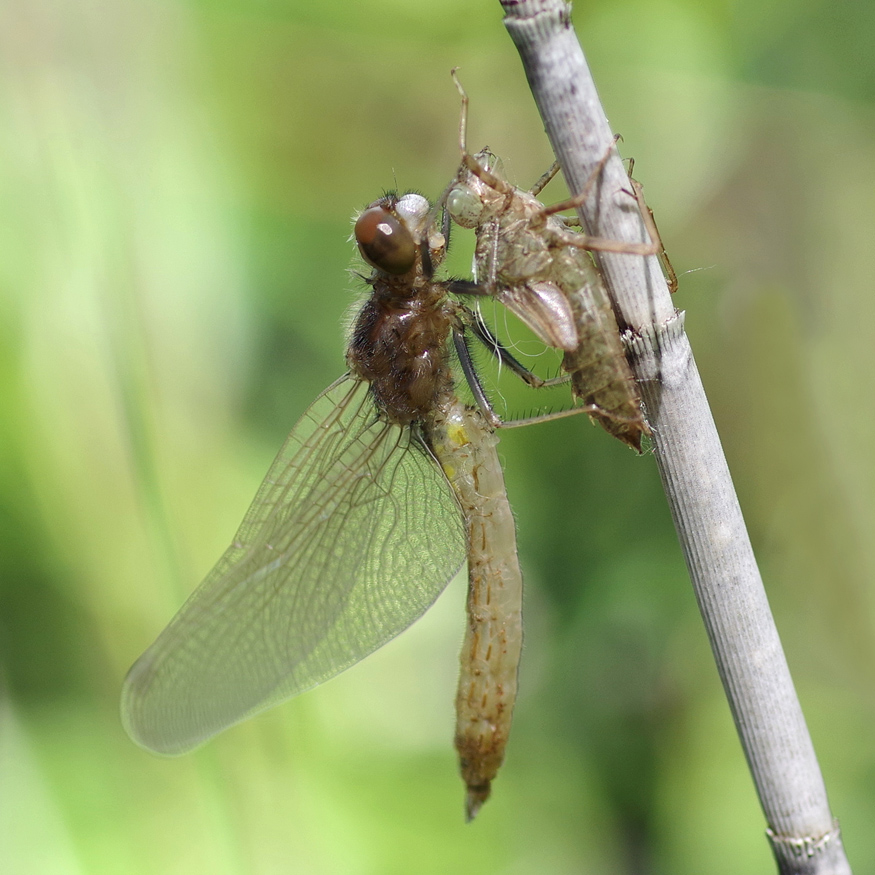
DOT TAILED WHITEFACE: Not long out of the water, this Dot-tailed Whiteface clings to its shed skin (which clings to an Equisetum stalk) as it pumps up its wings.
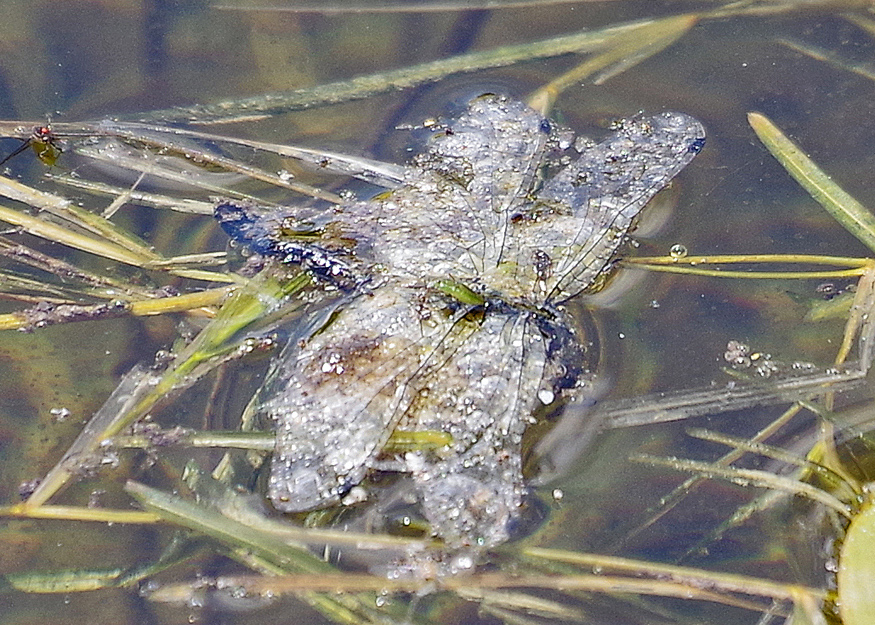
DRAGONFLY DOW (dead on the water): Whether it was chased by a predator or just miscalculated, this dragonfly got too close to the water and adhered to its sticky surface film. Beautiful even in death, its body is returning nutrients to the pond that nurtured it.
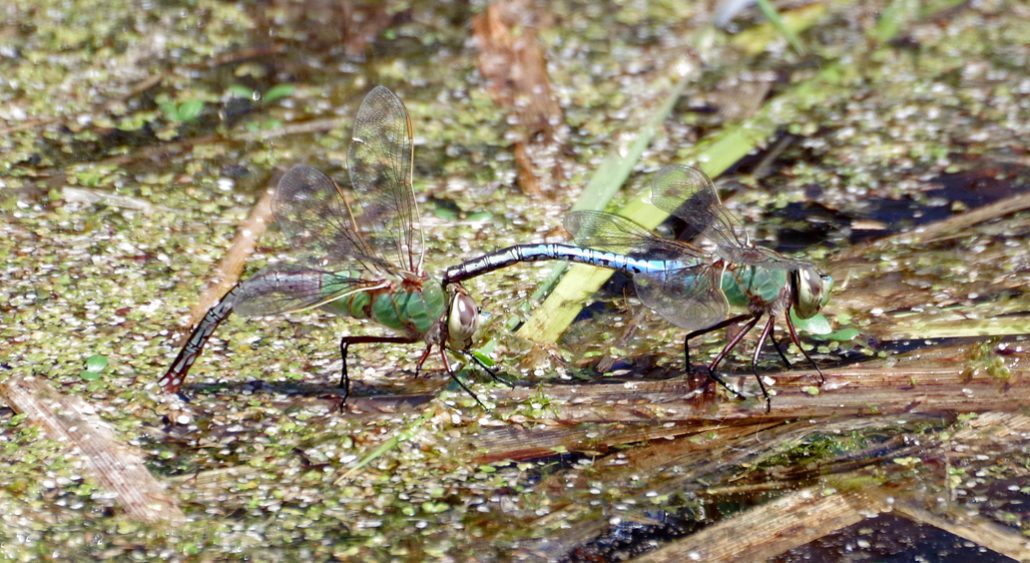
COMMON GREEN DARNER: Common Green Darners, one of our biggest dragonflies, are with us from May through September. Wisconsin has two populations – migratory and resident. Migratory darners like these, photographed in early May, arrive from the southeastern part of the US, mate, and put their eggs into the water, and their naiads develop during the summer. About the time these early birds are wearing out (mid-June), the resident population begins to emerge, and they fill the skies until the end of summer. The migrants emerge as adults at the end of August, and fly south, leaving no eggs in the ponds, but the eggs of the resident population overwinter under the ice. A dragonfly do-si-do.
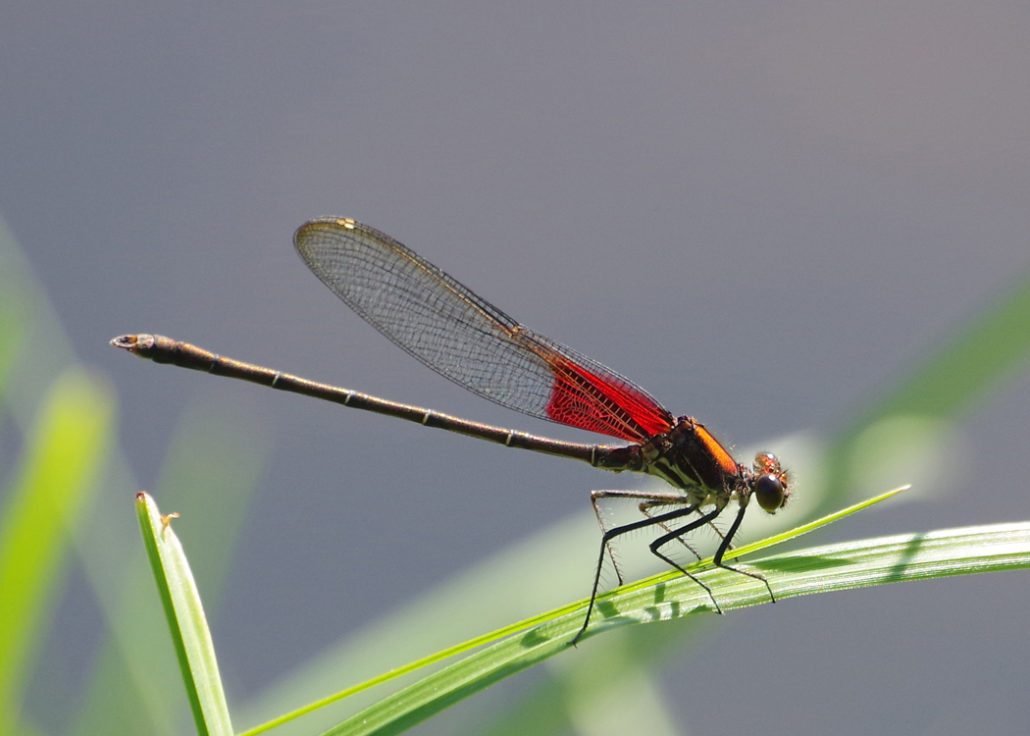
AMERICAN RUBYSPOT: Dragonflies and damselflies are fascinating, and they do some amazing things. They can be a challenge to photograph and to identify, and some are just plain beautiful!
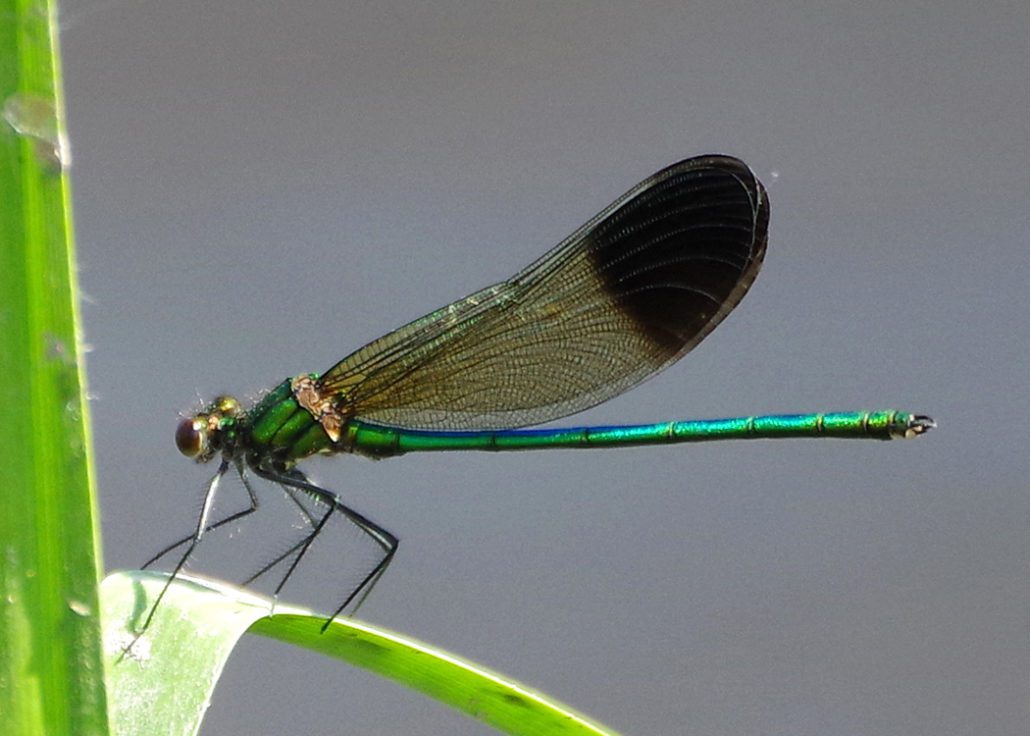
RIVER JEWELWING: River Jewelwings are much less common where the BugLady lives than are the spectacular Ebony Jewelwings (https://bugguide.net/node/view/1840629/bgimage), so she was thrilled to get a picture of one. Jewelwings and Rubyspots are members of the Broad-winged damselfly family Calopterygidae (which means “beautiful wing”), and they’re sometimes called river damsels because of their preferred haunts.
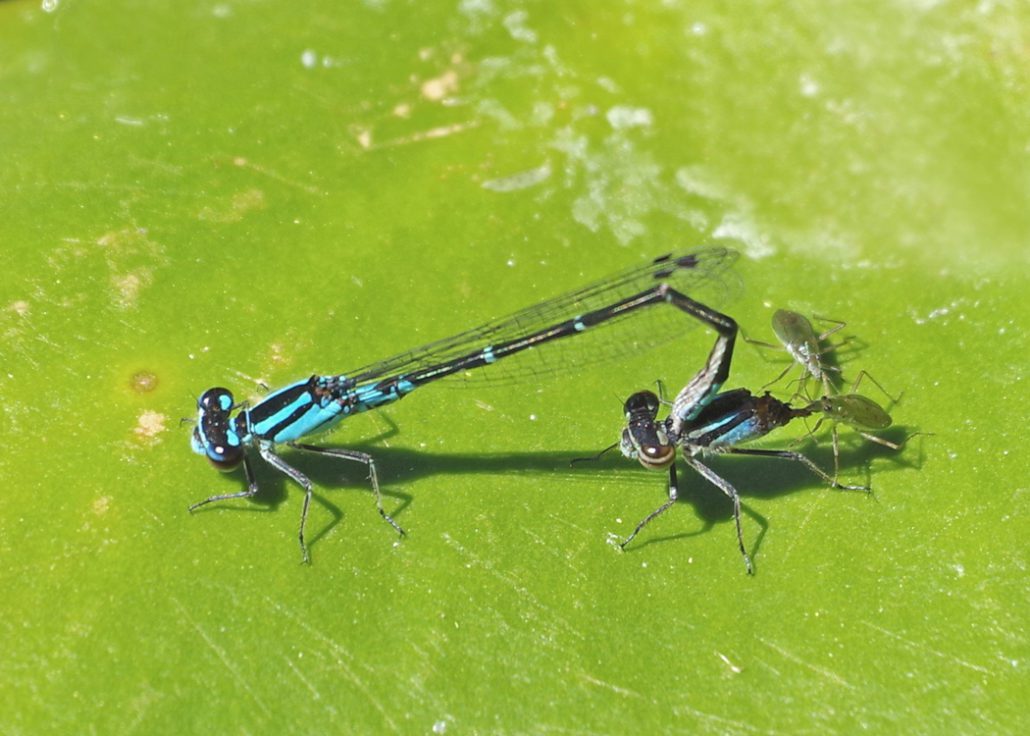
SKIMMING BLUETS: The BugLady aimed her camera at an odd-looking configuration on a water lily leaf and saw one-and-a-half damselflies. Apparently, a male and female were flying in tandem when a hungry bird came along and bit off the female’s abdomen. When the pair landed, two Mesovelid bugs (aggressive scavengers and predators), sensed “blood in the water” and zipped in to sip her bodily fluids (hemolymph). Just when you thought it was safe to go back in the water….
Go outside – look for dragonflies!
Kate Redmond, The BugLady
Bug of the Week archives:
http://uwm.edu/field-station/category/bug-of-the-week/

